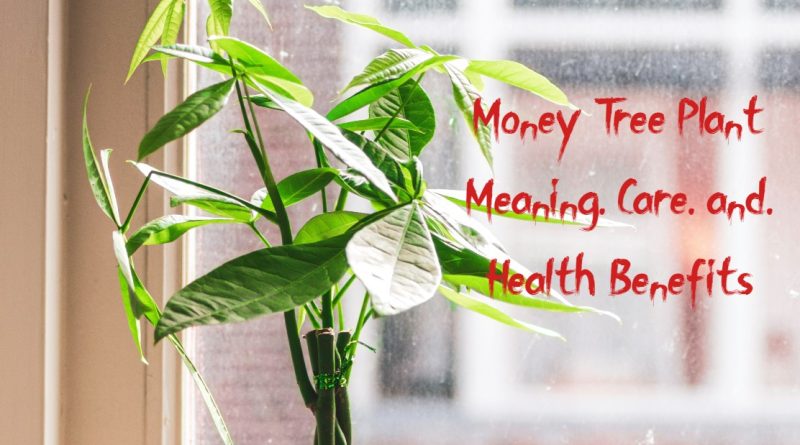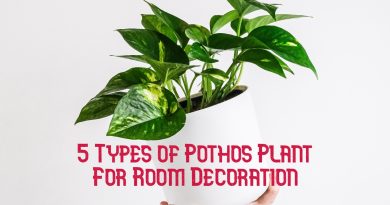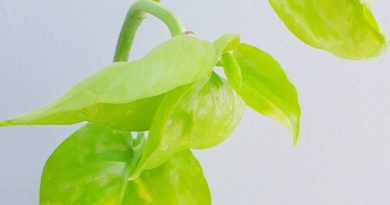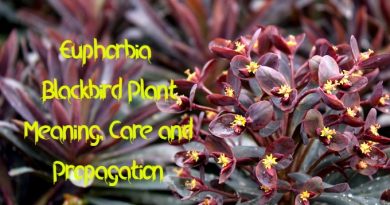Money Tree Plant: Meaning, Care and Health Benefits
Money Tree Plant (Pachira aquatica) is commonly known as Guiana chestnut is a species of tree native to Central and South America. It is an attractive and easy to care. It is actually a combination of multiple money trees braided together as they grow. Money Tree is an evergreen deciduous tree. It can grow from 4 to 20 meters tall in their natural habitat. This plant often have a slightly swollen and thickened trunk which also serves as a water storage.
Jump To Your Preferred Section:
Money Tree is a braided trunk with the bark smooth and brown to grey. This plant have dark green, long stalked and broad with hand shaped compound leaves. Also it consists of five to nine leaflets which are slightly leathery and shiny.
Symbolism
Money Tree Plant signifies good luck, abundance and prosperity. In Chinese culture, the Money Tree is believed to bring good luck and wealth to the owner. The five leaves on each stem of the plant represent the five elements of feng shui, namely wood, water, fire, earth, and metal, which are believed to attract positive energy and prosperity. The braided trunk of the Money Tree is believed to symbolize the intertwining of luck, prosperity, and growth. Similarly, the plant is often associated with the concept of abundance, and is believed to attract positive energy, growth, and success. The sturdy trunk and lush foliage of the Money Tree are seen as a symbol of stability and security. The plant is also believed to promote a sense of grounding and help its owner feel more secure and rooted in their financial and personal life.
Read: 15 Flowering Plants that Symbolize Love
Care of Money Tree Plant
Money Tree is relatively easy to care and can thrive in variety of indoor environments. Here are some care tips to keep your Money Tree healthy and vibrant:
Light
Money Trees prefer bright indirect sunlight. It can also adjust to lower light. But too little light will slow the growth and yellow leaves while too much direct sunlight will scorch the leaves.
Temperature and Humidity
Money Trees prefer warm, humid environments, so try to keep your plant in a room with a temperature between 60-75°F (15-24°C) and a humidity level of around 50%.
Water
Water the Money Tree when the top inch of soil feels dry to the touch. Be sure to water thoroughly, allowing the excess water to drain out of the bottom of the pot.
Fertilization
Fertilize the Money Tree once a month during the growing season i.e. spring and summer with a balanced, water-soluble fertilizer. Always make the soil damp before applying the fertilizer.
Pruning
Prune the Money Tree as needed to remove dead or yellowing leaves, encourage new growth, and maintain its shape.
Repotting
Repot the Money Tree every 2-3 years, or when it outgrows its current pot. Use a well-draining potting mix and a container that is slightly larger than the current one.
Health Benefits
While there is no scientific evidence to support the health benefits of Money Trees, some people believe that the plant has positive effects on health and well-being. Here are some of the commonly suggested health benefits of Money Trees:
Air purification
Like Spider Plant and Snake Plant, Money Trees are believed to help purify the air by removing harmful toxins and pollutants. This can lead to improved indoor air quality and may reduce the risk of respiratory problems.
Stress reduction
Some people believe that caring for a Money Tree can have a calming effect and help reduce stress and anxiety. The act of tending to a plant can be a meditative as well as soothing practice that promotes relaxation and mindfulness.
Boosting mood
The presence of plants, including Money Trees, has been shown to improve mood and promote feelings of happiness and well-being. This may be due in part to the calming and uplifting effect that plants can have on the mind and body.
Aesthetics
Money Trees are often grown as decorative plants, and their lush foliage and unique braided trunks can add beauty and visual interest to any space. Also the presence of plants and greenery in the home or office has been shown to have a positive effect on mood and well-being.
Common Problems With Money Tree Plant
Money Tree is a low maintenance plant but some common problems may arise:
Leaves Turning Yellow
It is caused by the improper soil moisture, particularly from watering the plant too frequently. Money Tree prefers deep but infrequent watering. Be sure to water thoroughly, allowing the excess water to drain out of the bottom of the pot. Another cause for leaves turning Yellow may be low humidity and dry soil. Money Tree loves a boost in humidity.
Leaves falling
It is caused because of inconsistent soil moisture and low humidity. Water the when the top inch of soil feels dry to the touch. Be sure to water thoroughly, allowing the excess water to drain out of the bottom of the pot. Also increase the humidity level of the plant by consistently misting the leaves of the plant.
Money Tree Plant Trunk Dying
Dehydration is one of the reason for the Money Tree trunk to die. The trunks of a Money Tree represent individual plants, meaning that in times of water scarcity, each plant has to compete for resources. This competition can result in the demise of one of the trunks.
#Money Tree Plant is non toxic and Pet friendly.
In Conclusion, the Money Tree (Pachira aquatica) is a popular indoor plant that is believed to bring good luck and also prosperity. While there is no scientific evidence to support these claims, the plant’s unique appearance and ease of care make it a popular choice for many plant enthusiasts. To care for a Money Tree, it’s important to provide it with the proper amount of water, light, and nutrients, and to be mindful of common issues such as overwatering, pests, and nutrient deficiencies. With proper care, your Money Tree can thrive and bring a touch of beauty and tranquility to your home or office.
Enjoy Planting!!
Read Also:
Chinese Money Plant: Meaning, Care and Propagation
10 Mind Refreshing Indoor Plants for Office
10 Weird Plant Names You Didn’t Know




